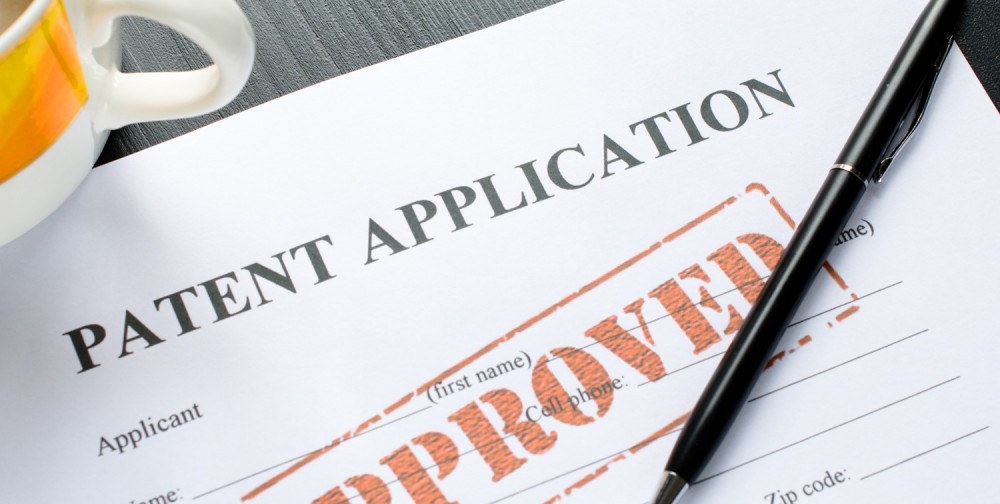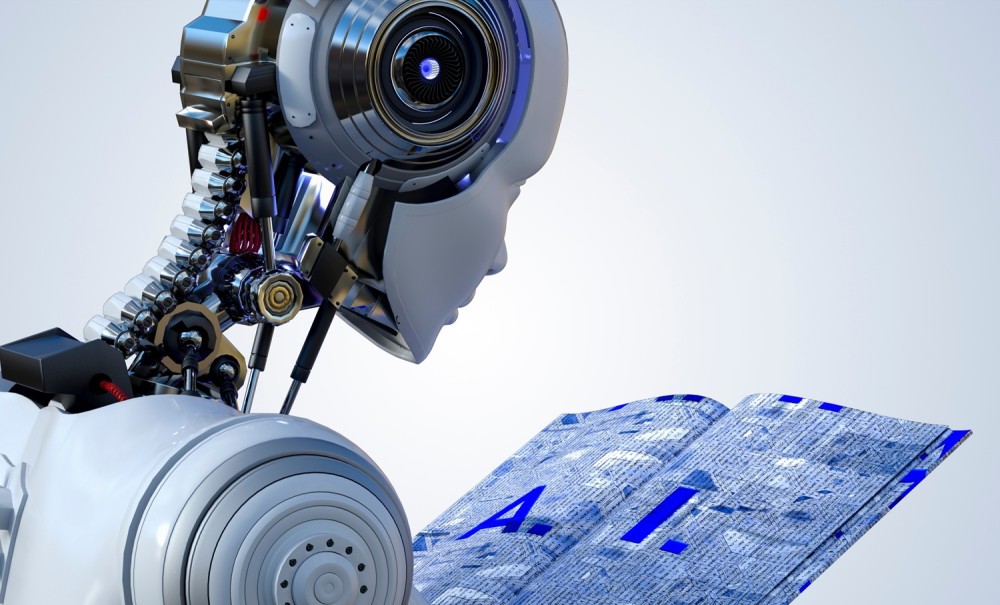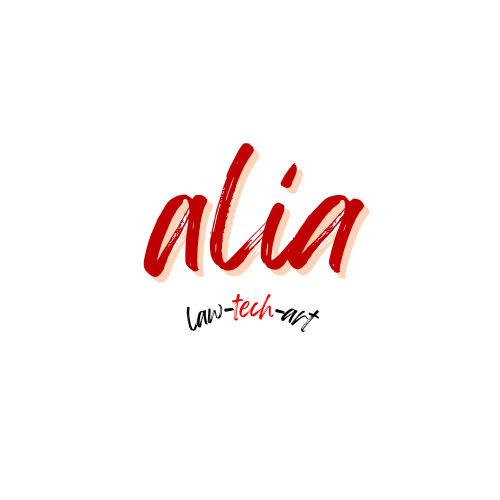Patent Law Debates in the Time of Artificial Intelligence
Artificial Intelligence and Patent Law
The discussion surrounding artificial intelligence (AI) and patent law has been centered on the patentability of AI-generated inventions. This issue has received substantial attention in academic circles, among policymakers, and within patent offices globally. There's been a lot of debate about whether AI can be considered an inventor under the current legal frameworks. Some jurisdictions reject applications naming AI as an inventor, while others are more open to it. This debate is fueled by the increasing capabilities of AI systems to autonomously generate outputs that seem to meet the traditional patentability criteria. Recognizing AI as an inventor or granting patents to AI-generated inventions raises fundamental questions about the nature of inventorship and the potential for incentivizing the development of creative machines.
While discussions have focused on AI inventorship and the patentability of its outputs, it's crucial to recognize that other intersections between AI and patent law are equally, if not more, interesting and hold significant real-world implications for intellectual property professionals. These areas, though less headline-grabbing, are rapidly shaping the daily practices and strategic considerations within the field.
AI is being used more and more often to assist with prior art searching, patent examination, and even the drafting of patent applications. For IP professionals, understanding the capabilities and limitations of these AI-powered tools is essential for conducting thorough due diligence, navigating the examination process, and advising clients effectively. AI's ability to analyze vast amounts of technical information and identify relevant prior art in a shorter timeframe will significantly impact patentability assessments and litigation strategies. Patent offices are exploring the use of AI to streamline their operations, which will lead to changes in examination procedures and timelines that IP professionals must adapt to.
Another vital intersection lies in the sufficiency of disclosure for AI-related inventions. AI systems, particularly machine learning models, are sometimes regarded as "black boxes" because they make it challenging to provide a clear and complete disclosure that enables a person skilled in the art to reproduce the invention. This issue is particularly relevant in Europe, where case law has highlighted the increasing scrutiny of AI patents regarding the disclosure of training data and model architecture. IP professionals involved in drafting and prosecuting AI-related patent applications must navigate these evolving disclosure requirements to ensure the validity and enforceability of their clients' patents.
The impact of AI on patentability standards, particularly non-obviousness, is another area of significant importance. As AI tools become more sophisticated and widely accessible, the hypothetical "person having ordinary skill in the art" (PHOSITA) will undoubtedly have access to these AI capabilities. This could raise the bar for non-obviousness, making it more challenging to obtain patent protection. IP professionals must understand how patent offices and courts are grappling with this evolving standard and how it affects the patentability of both AI-assisted and non-AI-assisted inventions.
While the patentability of AI-generated inventions has dominated the conversation, it's essential for IP professionals to expand their focus to the broader intersections between AI and patent law. The practical implications of AI as a tool in patent practice, the challenges of sufficient disclosure for AI inventions, and the evolving standards of patentability in the age of AI have direct and immediate consequences for the daily work of IP professionals. It is imperative for IP professionals to engage with these debates and understand their nuances to navigate the future landscape of intellectual property protection.

Automation and autonomy, is AI creating inventions?
AI technology is gradually being used to draft patent applications, some even believe that the most sophisticated AI systems are autonomously generating inventions.[1] The main problem in the inventorship debate is that ‘automation’ is confused with ‘autonomy’, leading to both terms being used as synonyms when, from a technical point of view, they are not.[2] Automation is a technical term that describes the use of technology to minimize human intervention in a specific process, autonomy is the capacity of an entity to make independent decisions or to govern itself without an external command.
The objective of AI is to systematize an intellectual task, which is traditionally performed by a human, and to automate it with a computer. The tasks that can be performed by computers thanks to AI have become increasingly more complex, but they remain narrowly delimited in purpose. From finding a path through a maze, playing chess, identifying an object in an image, to driving a car, all of these are examples of narrow tasks that have been delegated to AI systems. Each AI system addresses a particular challenge. Consequently, the problem the AI system aims to solve first needs to be “translated” into a set of instructions and rules that a computer can follow, i.e., an algorithm.[3]
This distinction in terminology is finally making its way to policy. The World Intellectual Property Organization (WIPO), for instance, distinguishes between AI-generated and AI-assisted creations, according to the degree of autonomy of the AI system. As declared in the Revised Issues Paper on IP Policy and AI: the term AI-generated ‘refers to the generation of an output by AI without human intervention. In this scenario, AI can change its behaviour during operation to respond to unanticipated information or events’. This is to be distinguished from AI-assisted outputs ‘that are generated with material human intervention and/or direction’.[4]
When AI is employed in the inventive process, it enables a more automated operation, but the search for a solution to a technical problem is not autonomous. The conception of the invention continues to be attributable to the human being, even if the details are calculated and put together by an AI model. A different question is that of determining the human inventor of ‘AI-assisted inventions’, since they require the involvement of many people, such as the programmer, those who develop the operational logic model, the machine instructors, and the operators. The degree and number of contributions vary according to the application of specific AI technology, and therefore, the co-inventorship among the above actors must be determined on a case-by-case basis.[5]

The Dual-Edged Sword: AI as a Tool in the Modern Patent System
Artificial intelligence is rapidly transforming various aspects of professional work, and the field of patent law is no exception. AI's capacity to process vast amounts of data and identify complex patterns presents both opportunities and challenges for professionals involved in the patent system, including inventors, patent attorneys, and patent examiners. While AI offers significant utility as a tool in tasks like prior art searching, patent examination, and even the drafting of patent applications, it is crucial to recognize its inherent limitations and the indispensable role of human oversight in ensuring the integrity and effectiveness of the patent process. [6]
One of the most significant applications of AI in the patent system is to help with prior art searching. Patent professionals are tasked with determining the novelty and non-obviousness of inventions, which requires scrutinizing a massive and ever-growing body of prior art, including patents, scientific literature, and other publicly available information. AI algorithms can analyze these extensive datasets with remarkable speed and efficiency, identifying connections and patterns that human searchers might miss due to time constraints or cognitive limitations. AI can assist in generating relevant keywords and synonyms, translating documents across languages, and ranking the most potentially relevant prior art based on various metrics. This can significantly reduce the time and effort required for comprehensive prior art searches, allowing professionals to focus on deeper analysis. However, there might also be implications that have legal effects on the users of the patent system. Those effects are still uncertain, and discussions are taking place about how to approach the situation. The United States Patent and Trademark Office (USPTO), for instance, is exploring the effects of incorporating AI to enhance prior art searching, an event is planned for the 25th of July, 2025 where they will listen to public input from stakeholders ‘on how the proliferation of AI could affect certain evaluations made by the Office, including what qualifies as prior art, the assessment of the level of skill of a PHOSITA, and determinations of patentability made in view of these evaluations.’ [7]
AI is also finding its way into patent examination processes. Patent offices are exploring the use of AI to classify new patent applications, route them to examiners with relevant expertise, and improve the efficiency of prior art searches conducted by examiners. AI algorithms can assist in identifying potentially relevant passages in prior art documents and mapping them to the claims of a patent application, suggesting potential grounds for rejection based on novelty or obviousness. This has the potential to speed up the examination process and contribute to a more consistent application of patentability standards.[8]
Even the drafting of patent applications is seeing the influence of AI. AI-powered tools can assist in structuring patent specifications, suggesting claim language, and ensuring consistency in terminology. These tools can analyze existing patents in a particular field to identify common elements and phrasing, potentially streamlining the drafting process.
However, despite these advancements, the role of AI remains that of a tool, and human oversight is essential due to the inherent limitations of current AI technologies.
Understanding and Relevance
While AI can identify similarities between documents, it lacks true understanding of the technical subject matter and the context of inventions. Human examiners and attorneys possess the technical expertise and contextual awareness to evaluate the actual relevance of prior art and to determine whether an invention is truly novel and non-obvious.[9] AI can highlight potential connections, but the crucial step of interpreting those connections and assessing their significance requires human judgment. For example, AI might identify a fishhook and a crane hook as similar based on shape, but a human expert would understand their fundamentally different functions and relevance in a patent search.[10]
Inventive Concept and Non-Obviousness
Assessing non-obviousness requires evaluating the inventive concept through the eyes of a person having ordinary skill in the art (PHOSITA). While AI could potentially simulate some aspects of a PHOSITA's knowledge, the legal standard involves an element of creativity and ingenuity that current AI cannot replicate. The determination of whether an invention represents more than just a logical progression from the prior art ultimately relies on human technical expertise and legal interpretation. Moreover, the definition of the PHOSITA itself may evolve to include familiarity with AI tools, further complicating a purely algorithmic assessment of obviousness.[11]
Legal Interpretation and Nuance
Patent law is a complex and evolving field with intricate legal doctrines and precedents. AI, as a tool based on algorithms and data, it lacks the capacity for nuanced legal interpretation and reasoning. Human patent attorneys and examiners are essential for applying legal principles to specific factual situations, interpreting claim language, and navigating the complexities of patentability requirements and enforcement.
Ethical Considerations and Bias
AI systems are trained on data, and this data can reflect existing biases. Without careful human oversight, the use of AI in the patent system could inadvertently perpetuate or amplify these biases, potentially leading to inequitable outcomes.

T 0161/18: Insufficient Disclosure Due to Lack of Training Data Details
In the context of AI-generated or AI-assisted inventions, ensuring sufficient disclosure in the patent application is a critical area requiring human expertise. Due to the 'black box' nature of some AI systems, describing the invention in a manner that enables a skilled person to reproduce it without undue burden can be challenging. Patent examiners with expertise in AI technologies need to scrutinize applications to ensure that they adequately disclose the AI architecture, training process, and relevant data. AI tools might assist in identifying potential disclosure gaps, but the ultimate judgment on sufficiency rests with human examiners.
The European Patent Convention (EPC) requires that a patent application discloses the invention in a manner sufficiently clear and complete for it to be carried out by a person skilled in the art. This is a fundamental aspect of the patent system's exchange of exclusive rights for public disclosure. For AI inventions, meeting this requirement has proven to be challenging, as highlighted by the EPO Boards of Appeal's decision in T 0161/18.[12]
Case T 0161/18 concerned a medical AI invention that used an artificial neural network (ANN) to determine cardiac output from a peripherally measured arterial blood pressure curve. The Board of Appeal (BoA) found the disclosure insufficient under Article 83 EPC because the application lacked details which it considered crucial. Firstly, the type and architecture of the network were not disclosed. Secondly, the application did not disclose specific input data suitable for training the ANN to achieve the invention, or at least one suitable dataset. It only mentioned that input data should cover a 'wide range of patients' with general selection criteria like age and health conditions, which was deemed insufficient.
The BoA reasoned that without this information, a person skilled in the art would not be able to rework the invention or carry it out. Since the claimed method differed from the prior art only by the use of an ANN whose training was not disclosed in detail, the use of the ANN did not lead to a special technical effect that could establish inventive step.
By omitting details of the training data, the applicant faced the risk that either the critical feature for inventive step (ANN specialization) was not sufficiently disclosed, or the patent was obvious because applying a generic ANN to automate cardiac output was something a skilled person could and would do. The BoA clarified that this situation could have been avoided by disclosing the missing information about the input data suitable for training the ANN or at least one suitable dataset.
The T 0161/18 decision is highly significant as it emphasizes that merely applying a generic AI system to a technical problem may not meet inventive step and sufficiency of disclosure requirements. The AI needs to be specialized, and the patent application must disclose details regarding this specialization, including aspects of the training data or process, AI architecture, model weights, or validation data. The EPO's examination guidelines on sufficiency of disclosure for AI inventions were updated in early March 2024 to reflect the standards established in T 0161/18. The updated guidelines state that if the technical effect depends on particular characteristics of the training data, those characteristics required to reproduce the technical effect must be disclosed, unless a skilled person can determine them without undue burden using common general knowledge. However, in general, the specific training dataset itself does not need to be disclosed.
While the EPO's Examination Guidelines have been updated, further refinements may be needed to fully address the complexities of disclosing AI inventions and to ensure a balance between incentivizing innovation and providing sufficient information to the public. The decision highlights the increasing scrutiny of AI-related patents and the critical role of clear and complete disclosure in this evolving technological field.
Takeaways
In conclusion, AI holds immense potential to enhance efficiency and effectiveness within the patent system by serving as a powerful tool for information processing and analysis. However, it is crucial to maintain a balanced perspective, recognizing that AI is not a substitute for human expertise and judgment. The nuanced tasks of understanding inventions, assessing non-obviousness, ensuring sufficient disclosure, and interpreting legal principles necessitate the continued and critical oversight of skilled human professionals. The future of the patent system will likely involve a collaborative synergy between human intellect and artificial intelligence, where AI augments human capabilities to foster innovation while upholding the fundamental principles of patent law.
As AI becomes more integrated into the patent system, professionals in the field must adapt to new procedures and timelines. Patent attorneys and agents will need to become proficient in using AI-powered search and drafting tools. Patent examiners will need to learn how to effectively leverage AI in their examination processes while remaining critically aware of its limitations. The speed and volume of information processing enabled by AI might necessitate adjustments in traditional timelines for certain tasks, but the critical stages requiring human analysis and decision-making will likely remain central and may even become more focused.
[1] Daniele Fabris, ‘From the PHOSITA to the MOSITA - Will 'Secondary Considerations' Save Pharmaceutical Patents From Artificial Intelligence?; (2020), 52 International Review of Intellectual Property and Competition Law, 685,708.
[2] Daria Kim, ‘AI-Generated Inventions’: Time to Get the Record Straight?´, GRUR International 69 (5) 443, 456.
[3] Thomas H. Cormen Charles E. Leiserson Ronald L. Rivest Clifford Stein, Introduction to Algorithms (MIT Press, 2009) 5.
[4] WIPO (2020). Revised Issues Paper On Intellectual Property Policy And Artificial Intelligence prepared by the WIPO Secretariat. (WIPO/IP/AI/2/GE/20/1 REV.). Available at: https://www.wipo.int/edocs/mdocs/mdocs/en/wipo_ip_ai_2_ge_20/wipo_ip_ai_2_ge_20_1_rev.pdf.
[5] Bernt Hugenholtz, Joao Pedro Quintais, Daniel Gervais, Christian Hartmann, and Jacqueline Allan, ‘Trends and Developments in Artificial Intelligence, Challenges to the Intellectual Property Rights Framework, Final Report’(2020) <https://ec.europa.eu/newsroom/dae/document.cfm?doc_id=71915>
[6] Marta Duque Lizarralde and Hector Axel Contreras, (2022). The real role of AI in patent law debates. International Journal of Law and Information Technology, [online] 30(1), pp.23–46. https://doi.org/10.1093/ijlit/eaac008.
[7] Uspto.gov. (2024). Impact of the proliferation of AI on prior art and PHOSITA listening session. [online] Available at: https://www.uspto.gov/about-us/events/impact-proliferation-ai-prior-art-and-phosita-listening-session [Accessed 16 Apr. 2025].
[8] Cardiff University, ‘AI-assisted patent prior art searching - feasibility study’(UKIPO, 2020). <https://assets.publishing.service.gov.uk/government/uploads/system/uploads/attachment_data/file/887907/aI-assisted-patent-prior-art-searching-feasibility-study.pdf>
[9] Philippe Lahorte, ‘Inside the mind of an EPO examiner’ (2018) 54 World Patent Information, 19,20.
[10] Duque Lizarralde and Contreras (n. 6).
[11] Gaétan de Rassenfosse, Jaffe, A.B. and Wasserman, M.F. (2023). AI-Generated Inventions: Implications for the Patent System. SSRN Electronic Journal. [online] https://doi.org/10.2139/ssrn.4434054.
[12] Epo.org. (2020). T 0161/18 (Äquivalenter Aortendruck/ARC SEIBERSDORF) 12-05-2020 | epo.org. [online] Available at: https://www.epo.org/de/boards-of-appeal/decisions/t180161du1 [Accessed 19 Apr. 2025].
